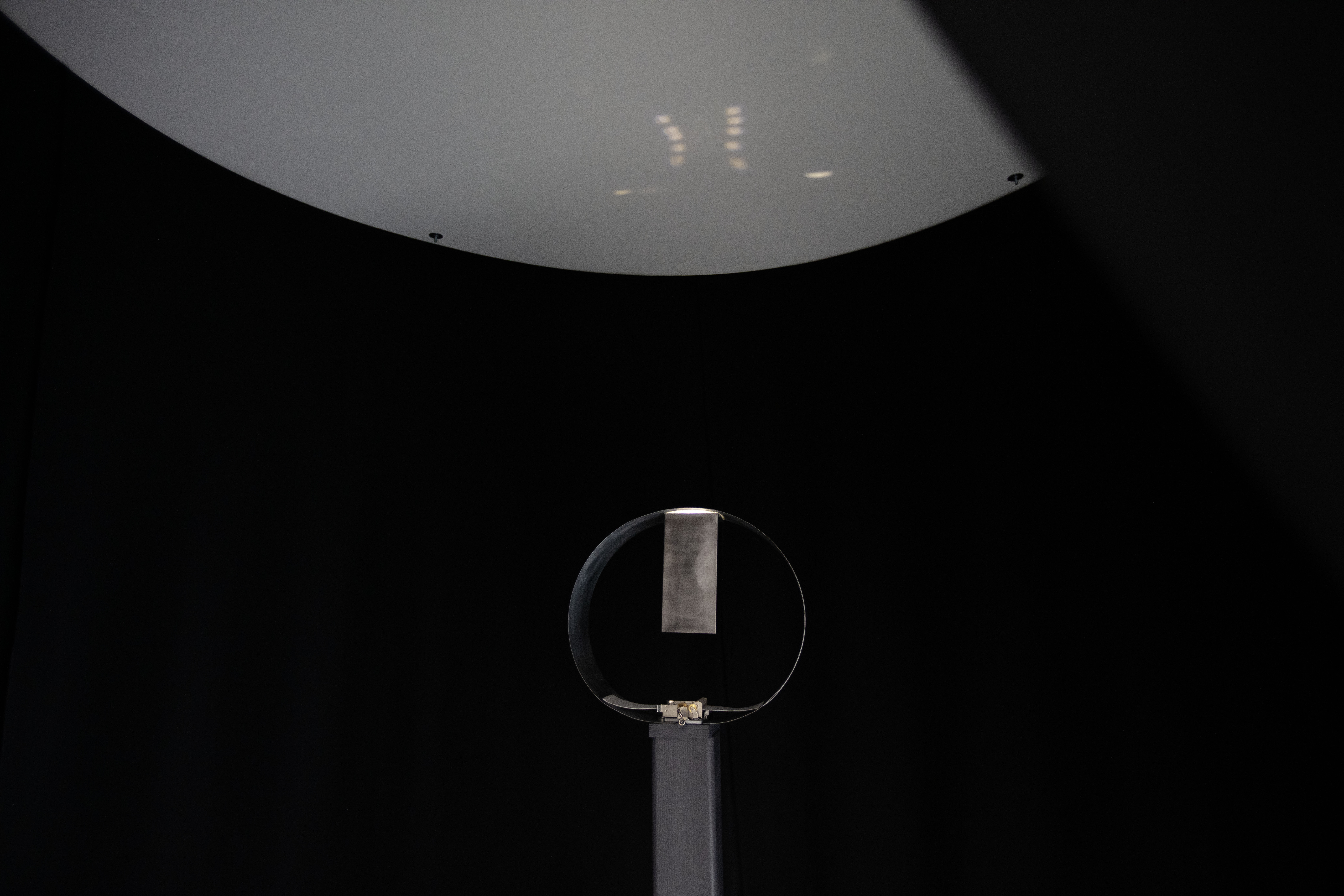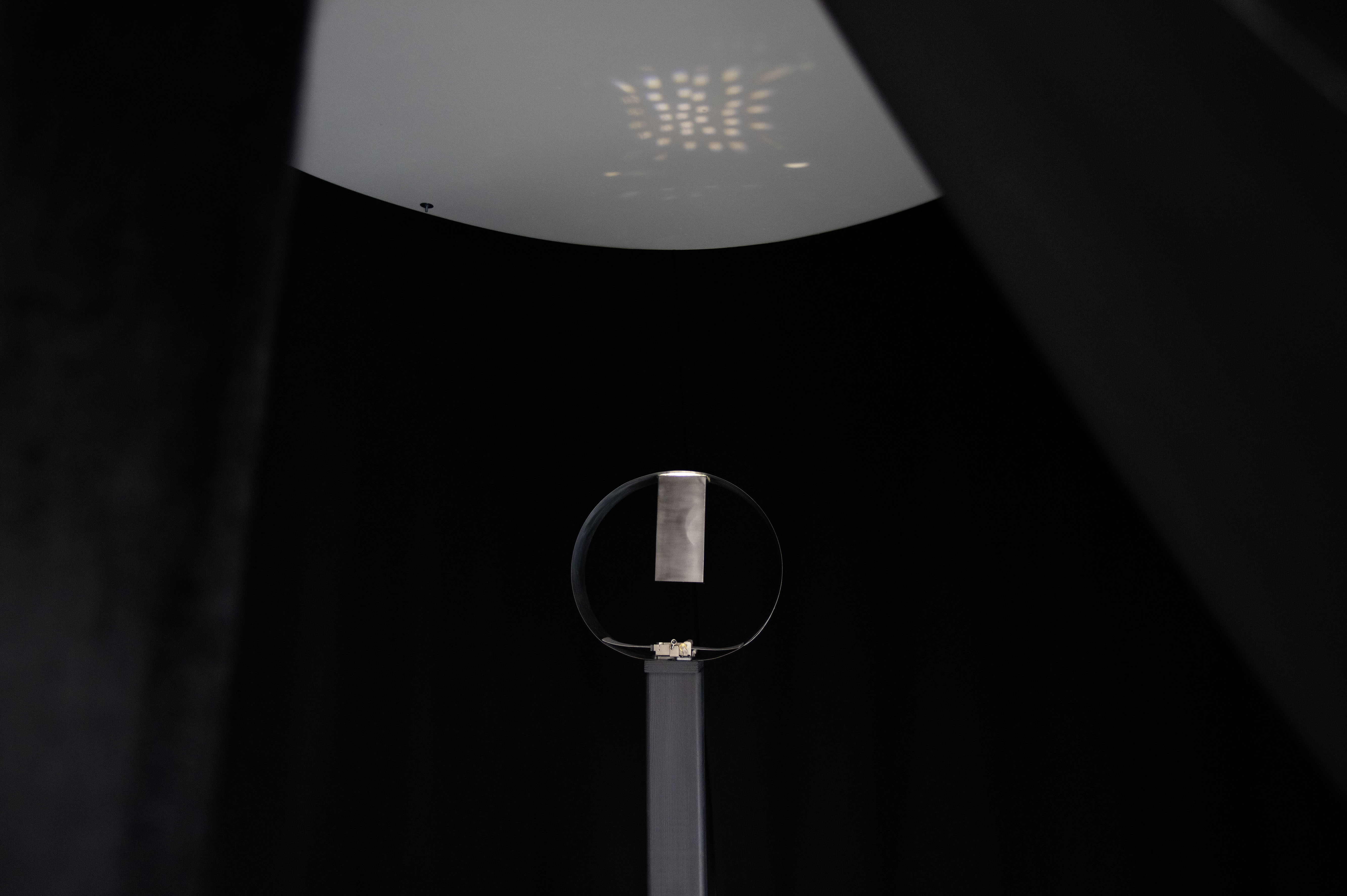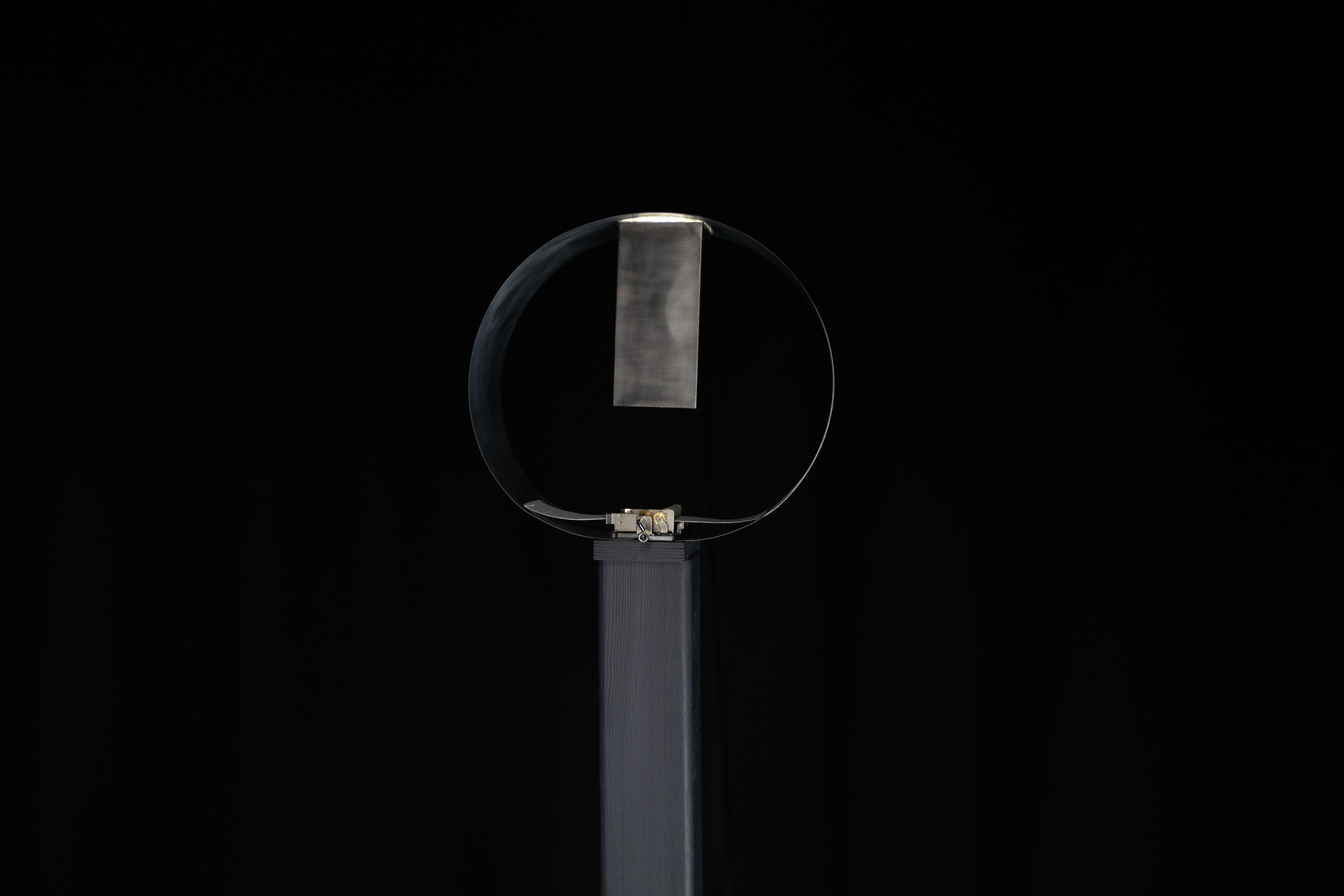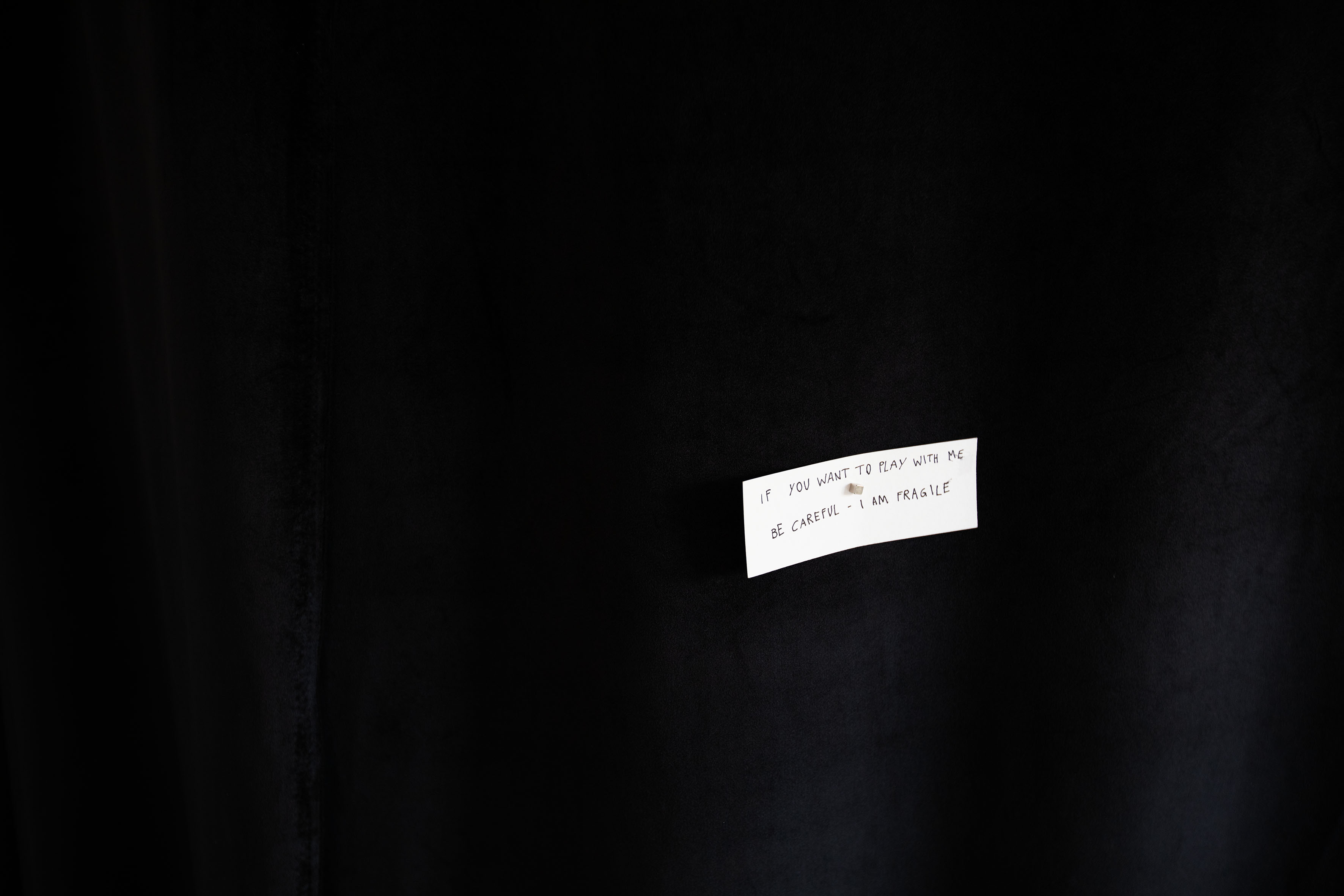Tide
Installation, 2022
Papierschlaufe, Dia-Projektion, Spieluhr






Die Arbeit „Tide“ beschäftigt sich inhaltlich mit periodischen Abläufen sowohl in der Natur, als auch persönlichen Zyklen.
So geben beispielsweise die Wasserbewegungen der Gezeiten in Form von Ebbe und Flut ein Sinnbild sich abwechselnder Extreme vor, gleichzeitig finden sich Hoch und Tief in individuellen Situationen und Stimmungen.
Auf einer Papierschlaufe, angelehnt an die Lochkarte, werden im Zeitraum eines Tages die unterschiedlichen Wasserstände eines Tidenkalenders eingetragen. So ergibt sich auf dem Streifen während der Flut eine Anhäufung von Lochungen, zeitgleich bleiben auf der gegenüberliegenden Seite der Schlaufe während der Ebbe nur wenige.
Während die Löcher also einerseits Klang in der Spieluhr auslösen, bleibt das Dia auf der gegenüberliegenden Seite unbeleuchtet, beziehungsweise findet nur minimale oder keine Projektion statt. Nach weiteren Drehungen der Kurbel ergibt sich der gegenteilige Effekt, also ein an die Decke projiziertes Dia (Flut), während der Klang ausbleibt (Ebbe).
So bleibt einerseits der tröstliche Gedanke einer zyklischen Abfolge in Phasen der Ebbe, auf die der Papierstreifen unweigerlich die nächste Flut ankündigt. Ebenso klingen, gerade während das Dia zwar dunkel bleibt, die meisten Töne der Spieluhr und zeugen von unsichtbaren, aber aktiven Vorgängen in den Tiefen des Inneren.
The work "Tide" deals with periodic processes in nature as well as personal cycles. For example, the water movements of the tides in the form of ebb and flow provide a symbol of alternating extremes, while at the same time highs and lows can be found in individual situations and moods. The different water levels of a tide calendar are entered on a paper loop, based on the punch card, over the course of a day. This results in an accumulation of perforations on the strip during high tide, while only a few remain on the opposite side of the loop during low tide. While the holes trigger sound in the music box on the one hand, the slide on the opposite side remains unlit, in other words there is only minimal or no projection. Further turns of the crank produce the opposite effect, i.e. a slide projected onto the ceiling (high tide), while the sound is absent (low tide). Thus, on the one hand, the comforting thought of a cyclical sequence in phases of low tide remains, on which the paper strip inevitably announces the next high tide. Similarly, while the slide remains dark, most of the tones of the music box resound, and bear witness to invisible but active processes in the depths of the interior.